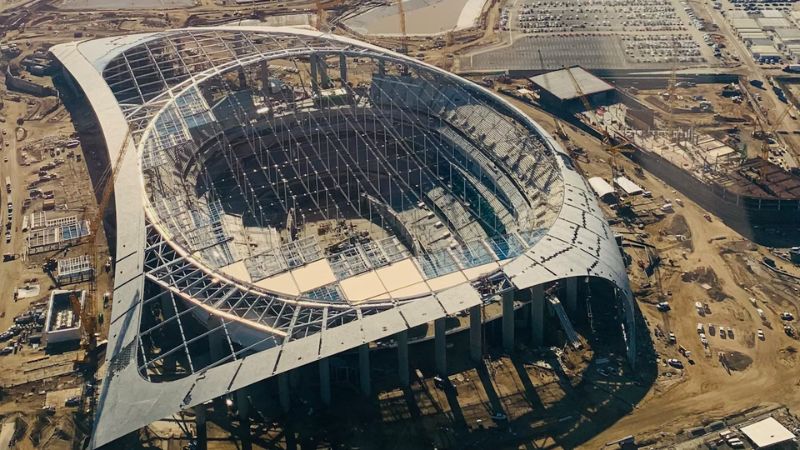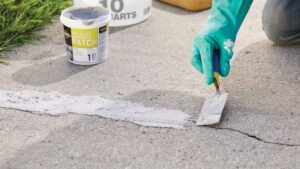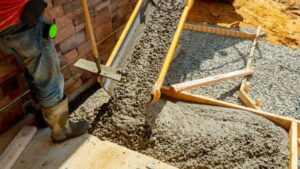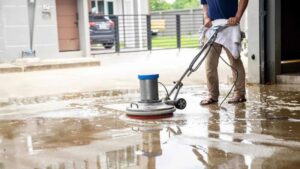Fiber-reinforced concrete (FRC) is revolutionizing construction practices by enhancing the performance and durability of concrete structures. By incorporating fibers—whether steel, glass, or synthetic—into the concrete mix, FRC offers improved resistance to cracking, impact, and fatigue. This innovative material not only strengthens the structural integrity but also prolongs the lifespan of concrete applications, making it an ideal choice for various projects, including pavements, precast products, and industrial flooring.
As construction demands evolve, understanding the key benefits of fiber-reinforced concrete is essential for builders and architects looking to optimize their designs while ensuring cost-effectiveness and sustainability. In this blog, we will explore 7 Key Benefits of Fiber-Reinforced Concrete, highlighting why it’s becoming the preferred choice in modern construction.
7 Key Benefits of Fiber-Reinforced Concrete
1. Enhanced Durability
One of the most significant benefits of fiber-reinforced concrete (FRC) is its enhanced durability compared to traditional concrete. The incorporation of fibers—such as steel, glass, or synthetic materials—improves the overall toughness of the concrete mix. This increased durability allows FRC to better withstand harsh environmental conditions, including extreme temperatures, moisture, and chemicals.
For instance, in regions prone to freeze-thaw cycles, FRC demonstrates superior resistance to cracking and spalling. Additionally, the fibers help minimize shrinkage, which can lead to fissures over time. By reducing maintenance costs and prolonging the lifespan of concrete structures, fiber-reinforced concrete presents an economically viable solution for construction projects. Ultimately, the durability of FRC makes it a preferred choice for applications that demand long-lasting performance, such as pavements, bridges, and industrial floors.
Also Read:- Tips For Choosing The Right Concrete Mix
2. Improved Crack Resistance
Fiber-reinforced concrete offers improved crack resistance, which is crucial for maintaining the structural integrity of various construction projects. The fibers embedded within the concrete help to distribute stresses more evenly across the material, reducing the chances of crack formation under load. This property is especially beneficial during the curing process, where concrete is susceptible to shrinkage and thermal stress. In traditional concrete, these stresses can lead to significant cracking, compromising the structure’s integrity.
However, FRC minimizes this risk by absorbing and redistributing stress through the fiber network. Moreover, even if minor cracks do occur, the presence of fibers can help hold the cracks together, preventing them from propagating and worsening over time. This enhanced crack resistance not only improves the aesthetic appeal of surfaces but also contributes to the overall safety and longevity of the structure.
3. Increased Flexural Strength
Another key benefit of fiber-reinforced concrete is its increased flexural strength. The addition of fibers enhances the material’s ability to withstand bending forces without failing. This characteristic is particularly advantageous in applications where the concrete is subjected to dynamic loads, such as in industrial floors or bridge decks.
Flexural strength is essential in ensuring that structures can endure not only the weight they support but also the forces exerted by traffic or machinery. Unlike conventional concrete, which may fail suddenly under excessive bending, FRC exhibits a more ductile behavior. This means that it can deform significantly before breaking, allowing for warning signs before potential failure. Consequently, increased flexural strength not only enhances safety but also reduces the likelihood of costly repairs or replacements due to structural failure.
4. Better Impact Resistance
Fiber-reinforced concrete is renowned for its superior impact resistance, making it an ideal choice for applications that experience high levels of stress and potential impact. The incorporation of fibers within the concrete matrix provides additional support, enabling the material to absorb and dissipate energy from sudden impacts effectively.
This characteristic is particularly beneficial in industrial settings, where heavy machinery may cause vibrations or shocks to the flooring. By utilizing FRC, contractors can create surfaces that resist damage from dropped tools, heavy equipment, or other impact forces. Additionally, this improved impact resistance can lead to a reduction in repair and replacement costs over time, as structures made with fiber-reinforced concrete are less likely to sustain significant damage. Overall, FRC’s ability to withstand impact makes it a robust solution for a variety of demanding environments.
5. Cost-Effectiveness
While the initial investment for fiber-reinforced concrete may be higher than traditional concrete, its long-term cost-effectiveness is undeniable. The durability and enhanced properties of FRC reduce maintenance and repair costs, ultimately saving money over the lifespan of the structure. The improved crack resistance and longevity of fiber-reinforced concrete mean fewer repairs and a reduced need for replacement materials.
Additionally, projects utilizing FRC may experience quicker construction timelines due to its enhanced workability and setting times, leading to lower labor costs. As construction projects increasingly prioritize sustainability and economic efficiency, fiber-reinforced concrete emerges as a material that aligns with these goals. The overall lifecycle cost savings, combined with its performance benefits, make FRC a smart investment for builders and contractors seeking durable, high-quality concrete solutions.
6. Enhanced Sustainability
Fiber-reinforced concrete contributes to sustainability in construction practices. The increased durability of FRC means that structures can last longer without the need for frequent repairs or replacements, reducing the environmental impact associated with producing and transporting construction materials. Additionally, the use of recycled fibers, such as steel or synthetic materials, can further enhance the sustainability of FRC.
By integrating recycled materials into the mix, manufacturers can decrease the demand for new raw materials, minimizing resource depletion. Furthermore, the longevity and reduced maintenance requirements of fiber-reinforced concrete contribute to lower carbon footprints over time. As the construction industry increasingly focuses on sustainable practices, FRC stands out as a viable option that balances performance with environmental responsibility.
Also Read:- Different Types Of Concrete Strengths
7. Versatile Applications
Fiber-reinforced concrete’s unique properties make it suitable for a wide range of applications across various industries. From roads and bridges to industrial flooring and precast elements, FRC can be adapted to meet the specific demands of each project. Its ability to withstand extreme conditions and resist cracking makes it an excellent choice for outdoor applications where exposure to the elements is a concern.
Moreover, FRC can be customized with different types of fibers, allowing engineers and architects to tailor the material to specific performance requirements. This versatility not only expands the potential use cases for fiber-reinforced concrete but also encourages innovative design solutions in modern construction. As builders seek materials that can accommodate diverse needs, fiber-reinforced concrete’s adaptability positions it as a key player in the future of construction.
Conclusion
Incorporating fiber-reinforced concrete into construction projects offers numerous advantages, from enhanced durability to reduced maintenance costs. As the construction industry continues to prioritize sustainability and efficiency, FRC stands out as a material that meets these demands while ensuring long-lasting performance. Whether you’re a contractor, architect, or builder, understanding the benefits of fiber-reinforced concrete can lead to smarter, more resilient design choices for your projects.
FAQs
What types of fibers are used in fiber-reinforced concrete?
Fiber-reinforced concrete can include various types of fibers, such as steel, glass, synthetic, and natural fibers, each contributing unique properties to the concrete mix.
How does fiber-reinforced concrete reduce cracking?
The fibers in FRC help distribute stress throughout the concrete, reducing the likelihood of cracks forming and improving the overall tensile strength of the material.




